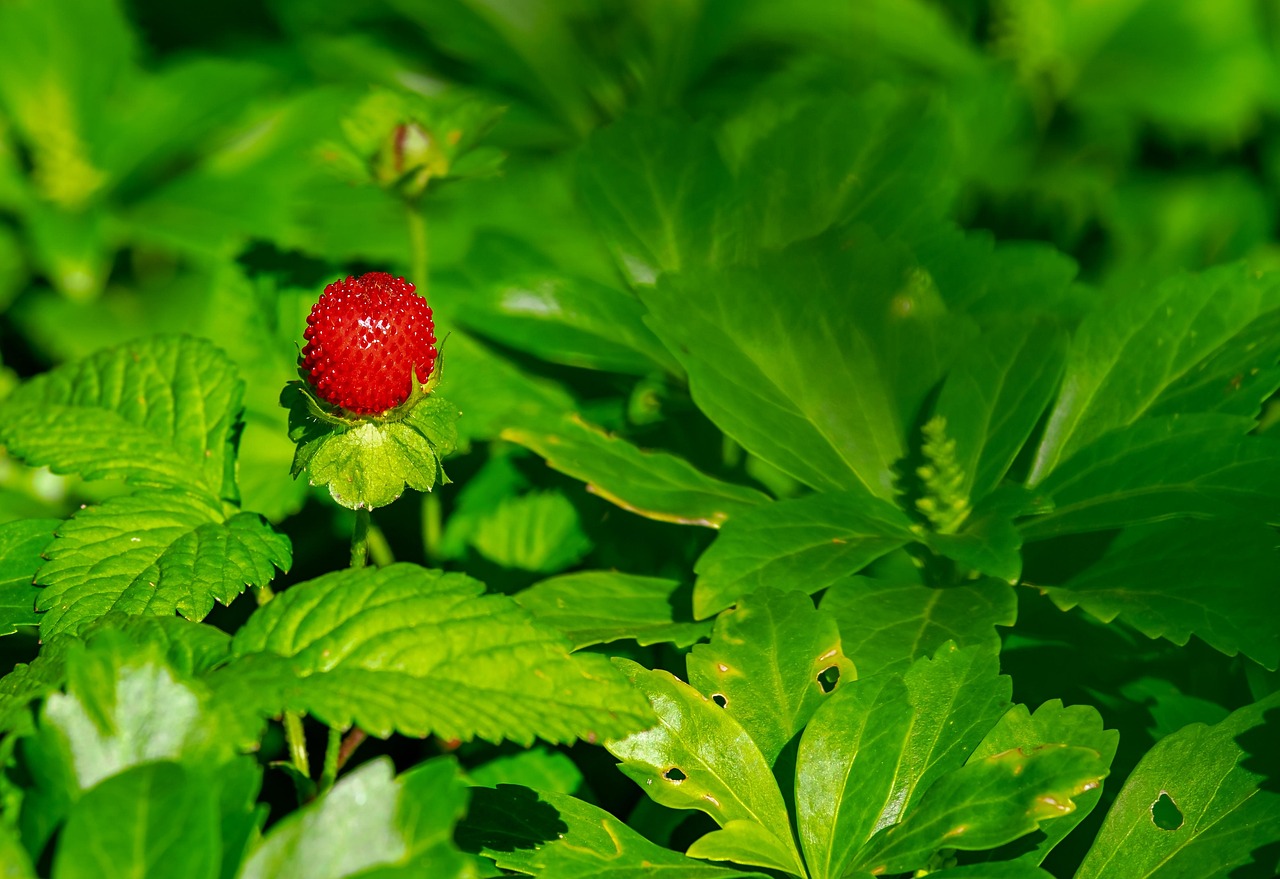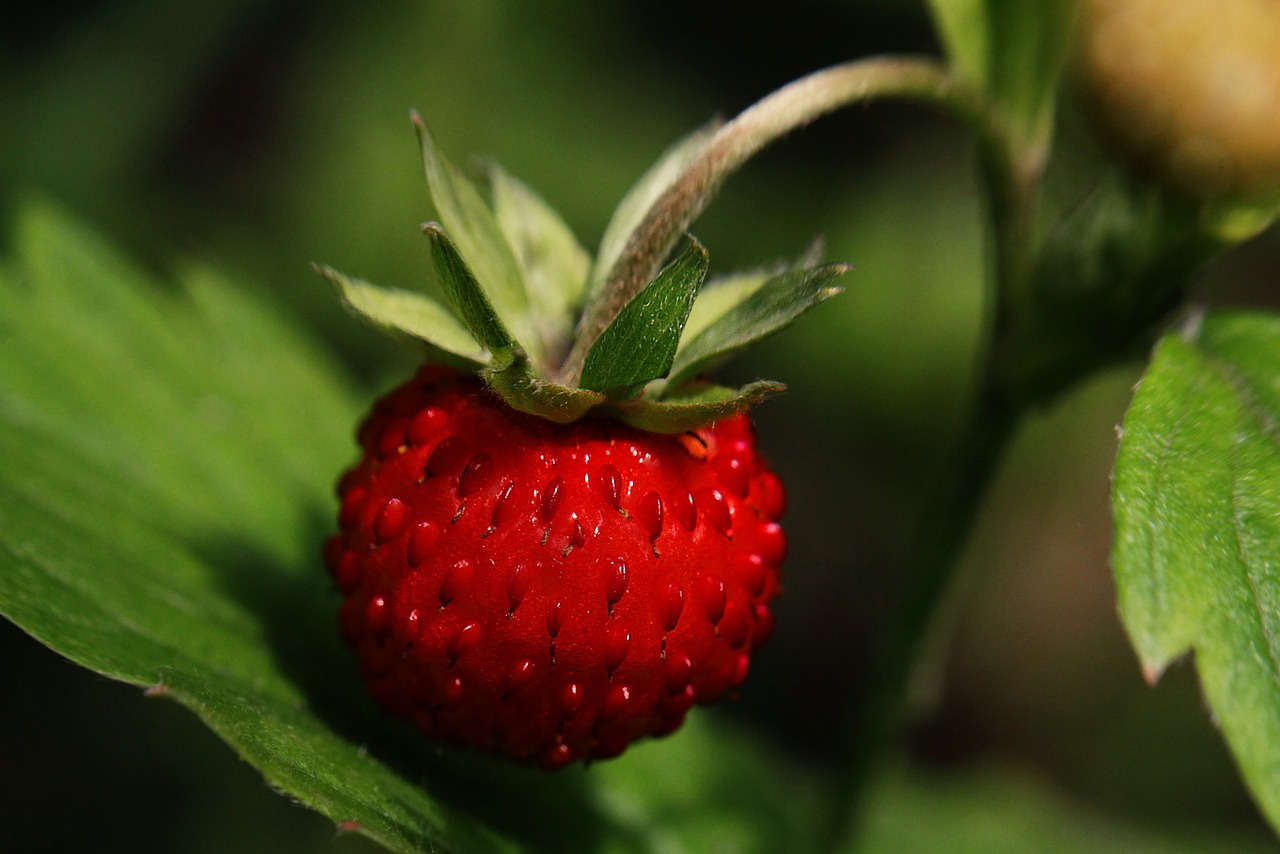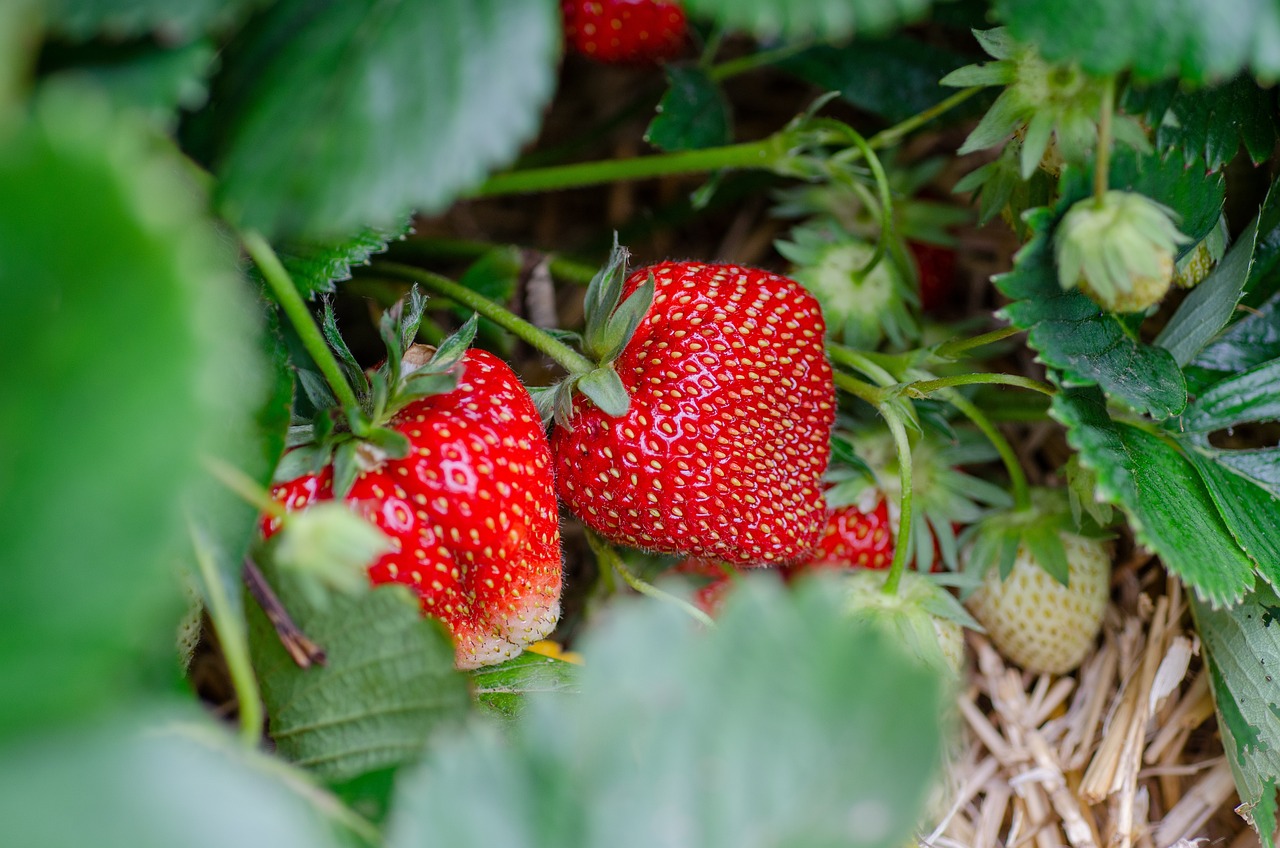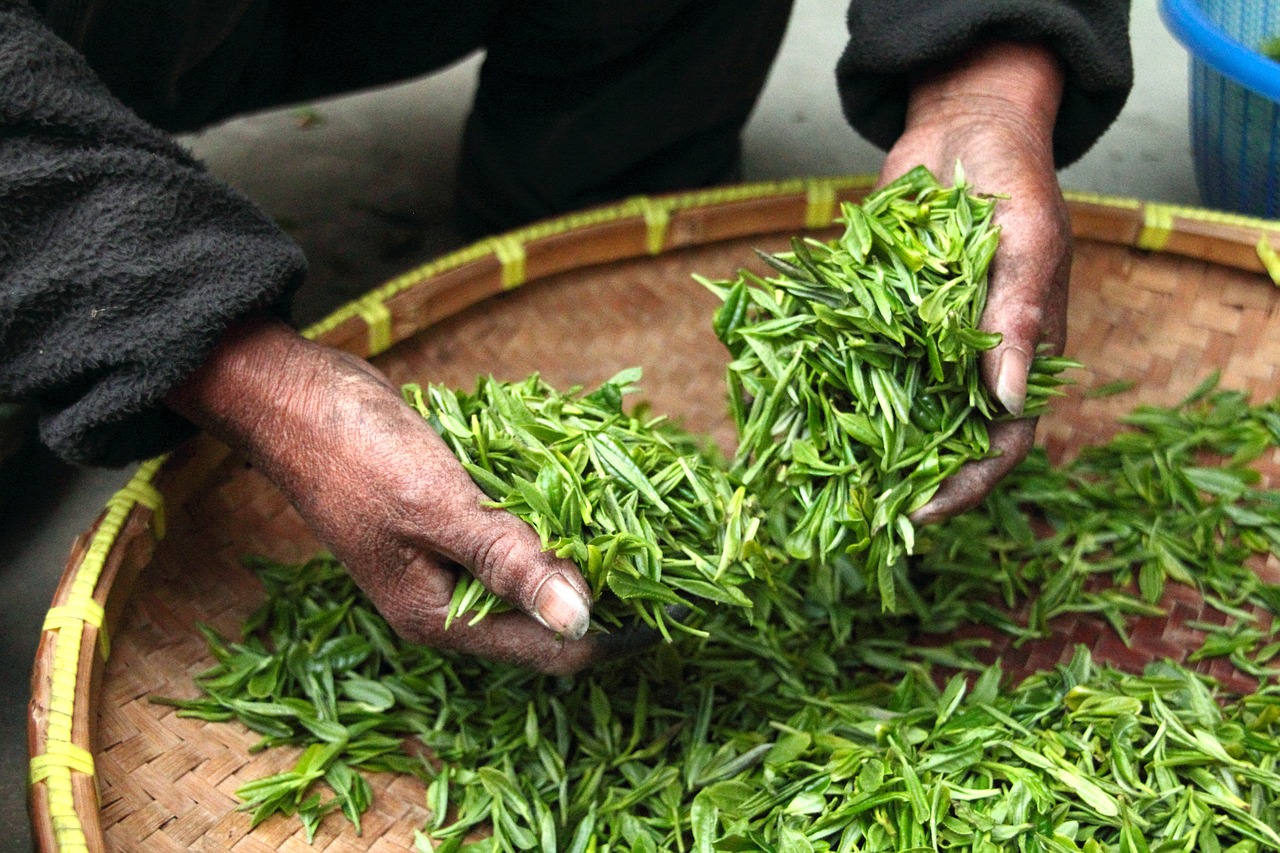Strawberry plant leaves may dry out due to various factors, including inadequate watering, poor soil quality, excessive sunlight, or pest infestations. Solutions involve ensuring consistent moisture, improving soil nutrients, providing shade during peak sun hours, and addressing any pest issues promptly.
Strawberries are beloved for their sweet flavor and vibrant color. However, growing healthy strawberry plants requires attention to their leaves, which play a crucial role in photosynthesis and overall plant health. When strawberry leaves begin to dry out, it can signal underlying problems that need immediate attention. Understanding the causes of leaf drying is essential for maintaining a thriving strawberry crop.
Drying leaves can indicate stress in plants, and strawberries are no exception. The leaves serve as the plant’s lungs, absorbing carbon dioxide and releasing oxygen. When they are compromised, the entire plant suffers. Various factors contribute to this issue, and recognizing them is the first step toward effective solutions.
Common Causes of Dry Strawberry Leaves

Several reasons can lead to dry leaves on strawberry plants. Below are some of the most common causes:
- Watering Issues: Both overwatering and underwatering can cause leaf dryness. Strawberries require consistent moisture but cannot tolerate soggy roots.
- Soil Quality: Poor soil lacking in essential nutrients can lead to weak plants and dry leaves. Strawberries thrive in well-drained, nutrient-rich soil.
- Sun Exposure: Excessive sunlight can scorch leaves, particularly in hotter climates. Young plants are especially vulnerable to sunburn.
- Pests: Insects like spider mites and aphids can damage leaves, leading to drying and curling.
- Disease: Fungal infections or diseases such as leaf spot can cause leaf damage and drying.
Identifying the exact cause of the problem is crucial for implementing the right solution. Regular monitoring of your strawberry plants will help catch issues early. Additionally, understanding environmental factors affecting your garden is important for maintaining healthy plants.
Impact of Watering on Leaf Health
Watering is one of the most critical aspects of caring for strawberry plants. Both too much and too little water can lead to problems. When plants do not receive enough moisture, they prioritize survival over growth, often resulting in dry and crispy leaves. Conversely, overwatering can suffocate roots and lead to root rot, causing similar symptoms.
The ideal watering schedule varies depending on weather conditions, soil type, and plant size. During hot weather, strawberries may require daily watering, while cooler temperatures might necessitate less frequent watering. It is best to water deeply but infrequently to encourage deep root growth.
The Role of Soil Quality
The soil in which strawberry plants grow plays a vital role in their health. Nutrient-rich soil supports robust growth and helps prevent many issues related to leaf drying. Strawberries prefer slightly acidic soil with good drainage. Testing your soil pH and nutrient levels can provide valuable insights into its health.
| Soil Component | Ideal Characteristics |
|---|---|
| pH Level | 5.5 – 6.8 |
| Texture | Loamy or sandy soil with good drainage |
| Nutrient Content | Rich in organic matter and essential nutrients |
Improving soil quality through composting or adding organic fertilizers can significantly enhance plant health and reduce leaf drying issues.
Sun Exposure and Its Effects on Strawberry Leaves
Sunlight is essential for the growth of strawberry plants, but too much direct sunlight can cause significant damage to their leaves. Understanding how light exposure affects leaf health is crucial for preventing drying and other related issues.
Strawberries typically thrive in full sun, which means they require at least 6 to 8 hours of direct sunlight each day. However, in extremely hot climates, the intensity of sunlight can become overwhelming, especially for young or newly planted strawberries. Signs of sun stress include curling leaves, scorched edges, and discoloration.
Strategies to Manage Sun Exposure
To protect strawberry plants from excessive sun exposure, consider the following strategies:
- Provide Shade: Use shade cloths during the hottest parts of the day, especially for young plants. This provides a buffer against harsh sunlight.
- Plant Orientation: Position strawberry plants in a location where they receive morning sun but are shaded during the hottest afternoon hours.
- Mulching: Apply organic mulch around plants to help regulate soil temperature and retain moisture, which can reduce heat stress on leaves.
- Regular Monitoring: Keep an eye on leaf conditions and adjust shading as necessary based on weather changes.
Pest Management for Healthy Leaves
Pests are another common cause of dry leaves on strawberry plants. Insects such as aphids, spider mites, and whiteflies can cause significant damage by sucking sap from leaves, leading to drying and wilting. Early detection and management are essential to protect plants from infestations.
Identifying Pest Issues
To effectively manage pests, it is important to recognize the signs of an infestation. Common indicators include:
- Discoloration: Leaves may turn yellow or develop spots.
- Webbing: Spider mites create fine webs on the underside of leaves.
- Sticky Residue: A sugary substance called honeydew may accumulate on leaves or fruits, indicating aphid presence.
Pest Control Solutions
Implementing appropriate pest control measures is vital for maintaining healthy strawberry plants. Consider these solutions:
- Natural Predators: Introduce beneficial insects like ladybugs that feed on aphids and other pests.
- Insecticidal Soaps: Use insecticidal soaps or oils that are effective against soft-bodied insects while being safe for plants.
- Regular Inspections: Conduct frequent checks for pests and remove any affected leaves promptly to prevent spread.
Disease Prevention and Management

Diseases can also contribute to dried-out leaves on strawberry plants. Fungal infections such as powdery mildew and leaf spot can weaken plants and degrade leaf health. Understanding disease symptoms can aid in early detection and treatment.
Common Strawberry Diseases
The following diseases are frequently encountered in strawberry cultivation:
- Powdery Mildew: A white, powdery fungus that develops on the surface of leaves, usually in warm, dry conditions.
- Leaf Spot: Brown spots with yellow halos appear on leaves, often caused by fungal pathogens.
- Botrytis Blight: This disease causes gray mold to form on leaves and fruit, especially under humid conditions.
Disease Management Techniques
To manage diseases effectively, consider the following practices:

- Cultural Practices: Ensure good air circulation by spacing plants properly and avoiding overhead watering.
- Fungicides: Apply fungicides as a preventive measure during high-risk periods, following the manufacturer’s guidelines.
- Crop Rotation: Rotate crops yearly to prevent soil-borne diseases from persisting in one location.
By addressing sun exposure, pest management, and disease prevention, gardeners can significantly improve the health of their strawberry plants and reduce the occurrence of dried-out leaves. Regular care and monitoring will lead to fruitful plants and a bountiful harvest.
Proper Fertilization for Healthy Strawberry Plants
Fertilization is a key factor in ensuring the health of strawberry plants. Proper nutrient levels help prevent leaf drying and promote vigorous growth. Strawberries require specific nutrients at various stages of their growth cycle to thrive.
Nutrient Requirements of Strawberry Plants
Strawberry plants primarily need three macronutrients: nitrogen, phosphorus, and potassium. Each plays a distinct role in plant health:
- Nitrogen: Essential for leaf and stem growth, nitrogen helps produce lush green foliage, which is critical for photosynthesis.
- Phosphorus: Important for root development and flowering, phosphorus supports fruit formation and overall plant vigor.
- Potassium: Aids in water regulation within the plant, potassium enhances drought resistance and improves fruit quality.
Signs of Nutrient Deficiency
Recognizing signs of nutrient deficiency can help gardeners take timely action. Here are some common symptoms:
- Yellowing Leaves: Often indicates nitrogen deficiency, leading to poor growth and smaller fruits.
- Purple-Hued Leaves: This may signal a phosphorus deficiency, affecting root development.
- Brown Leaf Edges: These can be a sign of potassium deficiency, which impacts water retention and overall health.
Effective Fertilization Practices
Implementing proper fertilization practices can enhance the health of strawberry plants significantly. Consider the following recommendations:
- Soil Testing: Conduct soil tests to determine nutrient levels and pH. This helps tailor fertilization to the specific needs of your soil.
- Use Organic Fertilizers: Compost or well-rotted manure can provide essential nutrients while improving soil structure.
- Fertilization Schedule: Apply fertilizers at key growth stages. For instance, applying nitrogen-rich fertilizers in early spring supports leaf growth, while potassium-rich fertilizers in late summer prepare plants for winter.
Irrigation Techniques for Optimal Moisture
Proper irrigation is vital for maintaining adequate moisture levels in the soil, which directly influences the health of strawberry leaves. Both overwatering and underwatering can lead to stress and drying leaves.
Types of Irrigation Systems
Selecting the right irrigation method can help ensure that strawberry plants receive consistent moisture. Common irrigation systems include:
- Drip Irrigation: This efficient system delivers water directly to the roots, minimizing evaporation and reducing water waste.
- Soaker Hoses: These hoses allow water to seep slowly into the soil, providing moisture to the root zone without wetting the leaves.
- Sprinkler Systems: While effective for larger areas, it is essential to avoid overhead watering during hot days to prevent leaf scorching.
Watering Guidelines
Establishing a consistent watering routine is crucial for strawberry plant health. Here are some guidelines to follow:
- Water Deeply: Watering deeply and less frequently encourages deeper root growth, making plants more resilient to drought conditions.
- Avoid Water Stress: Monitor soil moisture regularly. The top inch of soil should be dry before watering again.
- Adjust for Weather Conditions: Increase watering frequency during hot or dry spells, while reducing it during periods of rain or high humidity.
Environmental Factors Affecting Strawberry Plants

In addition to direct care practices, environmental factors also play a significant role in the health of strawberry plants. Understanding these factors can help gardeners create optimal growing conditions.
Temperature and Humidity
The temperature and humidity levels in the growing environment greatly influence strawberry health. Ideal temperatures range between 60°F and 80°F (15°C to 27°C). High humidity can lead to fungal diseases, while low humidity may cause leaf wilting.
Wind Exposure
Strong winds can physically damage strawberry plants and lead to moisture loss. Providing windbreaks, such as fences or planting taller crops nearby, can help protect strawberries from harsh winds.
By focusing on proper fertilization, effective irrigation techniques, and understanding environmental factors, gardeners can foster healthier strawberry plants with vibrant leaves and improved fruit production.
Additional Care Tips for Strawberry Plants
Caring for strawberry plants goes beyond addressing immediate issues like leaf drying. Implementing preventive measures and maintaining good practices can help create a thriving environment for your strawberries. Here are some additional care tips to consider:
Regular Pruning
Pruning strawberry plants is essential for promoting healthy growth and preventing disease. Regularly removing dead or damaged leaves helps improve air circulation and reduces the risk of fungal infections. Consider these pruning practices:
- Remove Old Leaves: At the end of the growing season, cut back old leaves to allow new growth in the spring.
- Thin Out Crowded Plants: If plants become too dense, thinning them out can improve light penetration and air circulation.
- Pinch Off Flower Buds: For new plants in their first year, pinching off flower buds encourages stronger root development.
Winter Care
Strawberry plants require special attention during winter months to ensure their survival and health. Protecting plants from cold temperatures is vital, especially in regions with harsh winters. Here are some winter care tips:
- Mulching: Apply a thick layer of mulch around plants to insulate roots and prevent freeze-thaw cycles.
- Covering Plants: Use row covers or frost blankets to protect plants from extreme cold.
- Water Before Frost: Ensure plants are well-watered before the first frost to help them withstand cold conditions.
Companion Planting
Companion planting can enhance the health of strawberry plants by naturally repelling pests and improving soil quality. Some beneficial companion plants include:
- Basil: Helps repel pests like aphids and improves flavor.
- Marigolds: Deter nematodes and other harmful insects.
- Garlic: Acts as a natural pesticide and can improve the overall health of the soil.
Final Thoughts
Maintaining healthy strawberry plants requires a comprehensive understanding of their needs and the challenges they face. From addressing water and nutrient levels to managing pests, diseases, and environmental factors, gardeners must adopt a holistic approach to care. Regular monitoring and timely interventions can significantly improve plant health, preventing leaf drying and ensuring fruitful harvests.
By implementing best practices in fertilization, irrigation, pruning, and winter care, growers can establish a robust foundation for their strawberry crops. Embracing companion planting can also support a thriving ecosystem within the garden. With dedication and informed care, it is possible to enjoy vibrant, healthy strawberry plants that yield delicious fruit season after season.
In summary, understanding the various aspects influencing strawberry plant health—from nutrient needs to environmental conditions—enables gardeners to cultivate resilient plants. This knowledge empowers you to act quickly when issues arise, ensuring your strawberry plants thrive and produce bountifully throughout their growing season.
